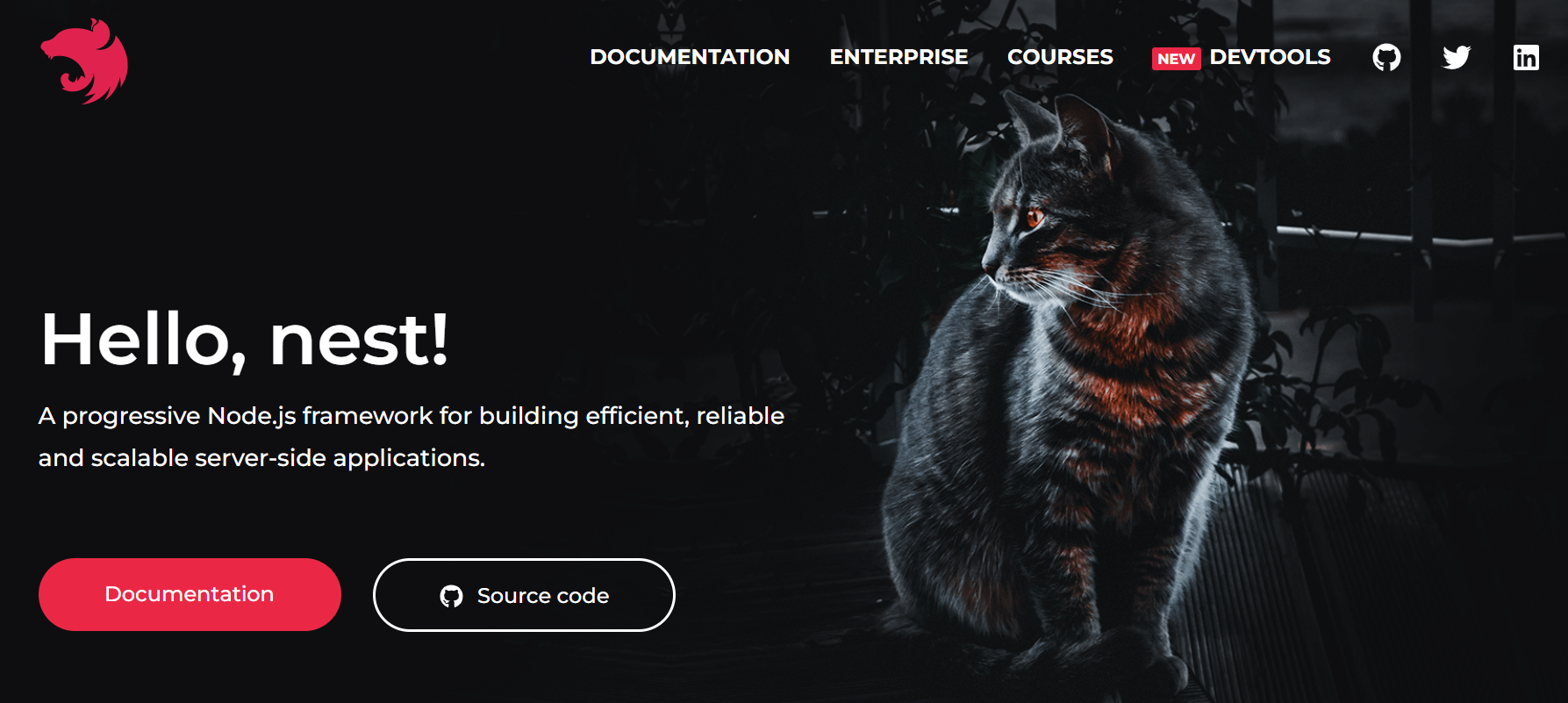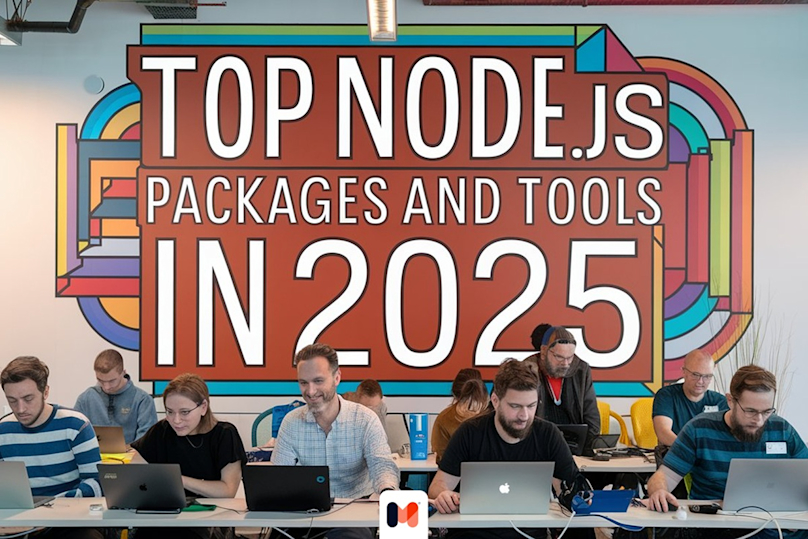Introduction
As the Node.js ecosystem continues to mature, staying ahead of the curve means constantly reevaluating the tools and libraries we use to build scalable, performant, and maintainable applications. Last year, we published our Top 5 Node.js Tools and Libraries for 2024, which helped guide many developers in modernizing their stacks. As we step into 2025, we're building on that foundation with an updated look at the tools we believe are defining the future of backend development.
In this year’s edition, as a Node JS Developers, we have taken a more hands-on approach by focusing on the tools we rely on daily at Mobile Reality—the ones that have earned their place in every new project we start. Whether you're launching a greenfield application or modernizing legacy services, the following five libraries offer the structure, performance, and developer experience needed to succeed in 2025 and beyond.
Matt Sadowski
CEO of Mobile Reality
High-Performance Backend Solutions with Node.js
Building scalable, secure, and high-performing backend solutions with Node.js to power modern web and mobile applications.
Custom Node.js backend development for web and mobile applications.
Fast, scalable, and event-driven solutions for real-time applications.
Integration of AI agents to automate backend processes and improve system efficiency.
Expertise in creating secure APIs, microservices architecture, and cloud integration.
Optimized performance for data-intensive and real-time applications.
Drizzle ORM in web development
Drizzle ORM is a next-generation TypeScript ORM built for performance, simplicity, and end-to-end type safety. It offers a modern, fluent API for interacting with relational databases like PostgreSQL, MySQL, and SQLite—while tightly integrating with TypeScript to ensure compile-time safety and maintainability.
At Mobile Reality, we made the strategic decision to switch from TypeORM to Drizzle ORM in 2024, and it’s proven to be one of our best architectural choices to date. The transition brought immediate improvements in both developer experience and application performance.
Where TypeORM sometimes required complex configurations and had less intuitive TypeScript integration, Drizzle provided a significantly cleaner and more predictable development flow. Its declarative schema definitions and lightweight footprint made onboarding faster for new developers and reduced overhead in managing migrations and query logic.
Key Features:
Asserts type correctness for all operations performed on the databases in applications developed using typescript.
Speeds up the definition and migration of schemas within databases.
Support for various business applications makes this platform ideal as it can be used with different databases.
Zod NPM package
Zod is a TypeScript-first schema declaration and validation library that brings runtime type-checking and static type inference together in a clean, elegant API. It empowers developers to define robust schemas for data models and validate input data efficiently—without compromising developer experience or type safety.
At Mobile Reality, Zod has become a standard tool in all our backend projects. Whether we’re building RESTful APIs with NestJS or constructing microservices with raw Express or Fastify, Zod plays a central role in ensuring our data contracts are predictable, validated, and fully type-safe.
Unlike traditional validation libraries, Zod automatically infers TypeScript types from schemas. This dramatically reduces code duplication and helps maintain consistency across your data layers—from API inputs to database logic.
Why We Use Zod Across All Our Backends:
Unified Validation and Typing: Define your schema once and use it everywhere—client validation, server endpoints, database layers, and tests.
Type Inference: Automatically syncs your runtime validation logic with static types, avoiding mismatch issues between interfaces and actual runtime checks.
Composability: Perfectly fits with our modular backend architecture, allowing us to create reusable validation schemas across different services and endpoints.
Lightweight and Fast: Minimal performance overhead, even in high-throughput API environments.
Common Use Cases in Our Projects:
API request body and query parameter validation
Schema validation for database payloads before insert/update operations
Parsing and sanitizing environment variables
Constructing fully typed DTOs (Data Transfer Objects)
By standardizing on Zod, we’ve improved code readability, reduced bugs due to invalid inputs, and accelerated the onboarding process for new developers. It’s one of those tools that we now can’t imagine working without.
NestJS one of the best Node JS framework

NestJS is a progressive Node.js framework built with TypeScript, designed to create scalable and maintainable server-side applications. Inspired by Angular's architecture, it offers a highly modular and structured development approach—making it a top choice for enterprise-grade solutions.
At Mobile Reality, NestJS has been our core backend app development framework for years and hundreds of projects—and it remains central to everything we build on the server side. It’s not just a preference—it’s our standard. Starting a backend project without NestJS is simply not a realistic scenario for us.
Its out-of-the-box support for TypeScript, powerful dependency injection system, and robust ecosystem (including modules for microservices, WebSockets, GraphQL, and more) makes it ideal for both monolithic and distributed system designs.
Why NestJS Is Non-Negotiable for Us:
Scalability: Nest's architecture promotes clean code separation and reusability, which helps us manage complex applications across teams.
Productivity: With features like decorators, guards, interceptors, and pipes, it streamlines common backend tasks—letting developers focus on building features, not boilerplate.
Best-in-Class TypeScript Support: Its strong typing enables safer code, clearer contracts, and better development velocity.
Microservices Ready: Whether we’re building REST APIs, GraphQL endpoints, or message-based microservices, NestJS adapts perfectly to our project needs.
How We Use It:
As the foundation for all backend APIs—REST, GraphQL, and hybrid
With WebSockets for real-time apps
In event-driven architectures with RabbitMQ, Kafka, or Redis
Integrated with validation libraries like Zod for schema consistency
Alongside Pino for structured and high-performance logging
NestJS provides us with the structure and flexibility needed to build both MVPs and production-grade systems quickly and reliably. Its stability, documentation, and active community only reinforce our commitment to using it long-term.
Pino

Pino is a high-performance, JavaScript, lightweight JSON logger for Node.js applications. It is designed to be extremely fast, with a focus on low overhead and asynchronous logging capabilities. Pino integrates seamlessly with various web frameworks and supports a wide range of transports, making it a versatile choice for logging in Node.js applications.
Key Features:
High Performance: Optimized for speed, ensuring minimal impact on application performance.
Asynchronous Logging: Supports asynchronous log processing, reducing latency in logging operations.
Framework Integration: Compatible with popular web frameworks like Express, Fastify, and NestJS.
Swagger
Swagger is the industry-standard toolkit for designing, building, and documenting RESTful APIs. Built on the OpenAPI Specification, Swagger offers a rich set of tools—including Swagger UI, Swagger Editor, and Swagger Codegen—that make it easier for teams to maintain consistent and interactive API documentation.
At Mobile Reality, Swagger has been with us from day one. It’s not just a tool we use—it’s an essential part of our backend development process. For us, building an API without Swagger documentation is simply unthinkable.
From automatically generating interactive docs based on our code annotations to providing seamless collaboration between frontend and backend teams, Swagger has become the backbone of how we communicate and maintain our API contracts.
Why Swagger Is Inseparable From Our Workflows:
Interactive Documentation: Enables internal and external teams to explore API endpoints in a real-time UI, test calls, and view sample responses—all without writing a single line of frontend code.
OpenAPI Compliance: Aligns with industry standards, ensuring that our APIs are compatible with other tools, SDKs, and clients.
Seamless Integration With NestJS: We leverage Swagger decorators in our NestJS controllers to auto-generate documentation directly from code—no duplication, no manual syncing.
Better Developer Experience: Swagger makes onboarding easier for new devs and simplifies client integration by providing live, self-updating docs.
How We Use It at Mobile Reality:
Auto-documenting all REST APIs across backend services
Sharing API specs with clients and partners via live docs
Versioning and maintaining multiple API releases in complex platforms
Generating SDKs from OpenAPI definitions for cross-platform development
Swagger ensures our APIs are transparent, easy to understand, and always ready for collaboration. Its role in our development lifecycle is foundational—and we rely on it to keep our teams, clients, and systems in sync.
Matt Sadowski
CEO of Mobile Reality
Transform Your Business with Custom AI Agent Solutions!
Leverage our expertise in AI agent development to enhance efficiency, scalability, and innovation within your organization.
Expert development of modular and scalable AI software solutions.
Integration of Large Language Models (LLMs) for advanced capabilities.
Customized AI agents tailored to your business needs.
End-to-end support from design to deployment.
Enhance decision-making and operational efficiency with AI.
Conclusion
In the ever-evolving Node.js ecosystem, choosing the right tools can dramatically impact a development team's efficiency, scalability, and long-term success. At Mobile Reality, our technology choices are shaped by real-world experience, not trends. The five tools highlighted in this article—Drizzle ORM, Zod, NestJS, Pino, and Swagger—are not just popular within the Node.js community; they are deeply embedded in our daily development workflows.
From the performance gains and type safety we achieved by switching to Drizzle ORM, to the confidence and consistency brought by using Zod across all our backend projects, these tools have enabled us to ship reliable code faster and maintain high standards in complex environments. NestJS continues to be our undisputed backend framework of choice, providing the structure and flexibility needed for everything from MVPs to enterprise-grade systems. Pino delivers the observability we need without sacrificing speed, and Swagger has been indispensable for maintaining clear, interactive, and up-to-date API documentation since the inception of our company.
As we move further into 2025, these tools will remain integral to how we build software—because they’ve proven to be scalable, efficient, and developer-friendly. If you’re looking to upgrade your Node.js stack or streamline your backend development, these libraries are more than worth your consideration—they’re game-changers.
Explore More Development Tools Rankings
Choosing the right tools and libraries can significantly enhance your development process. At Mobile Reality, we analyze and rank the best tools for various technologies, ensuring you have the insights to make the best choices. Dive into our curated lists to discover more essential resources:
- Top 5 React Native tools and libraries in 2025
- Top 5 React.js tools and libraries for development in 2025
- Top 5 Vue.JS tools and libraries in Web Development in 2025
- Top 5 React.JS tools and libraries in 2024
- Top 5 React Native tools and libraries in 2024
- Top 5 Vue.JS tools and libraries in 2024
- Top 5 Node.JS Backend Tools and Libraries in 2024
- Top 3 cloud (AWS / Azure) services 2024
Whether you’re working with React.js, Node.js, or other popular frameworks, our rankings and reviews are crafted to help developers maximize productivity and build exceptional software. If you’re looking for personalized recommendations for your next project, reach out to our team. We’re here to empower your development journey with cutting-edge tools and expert guidance.






